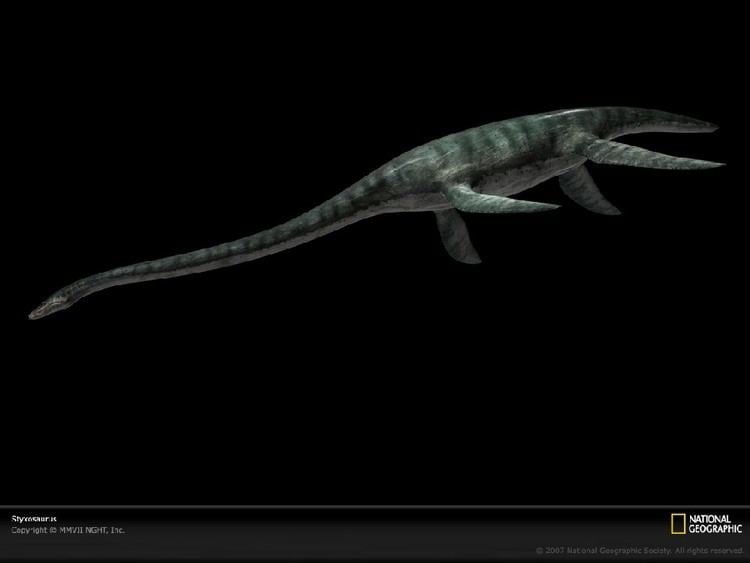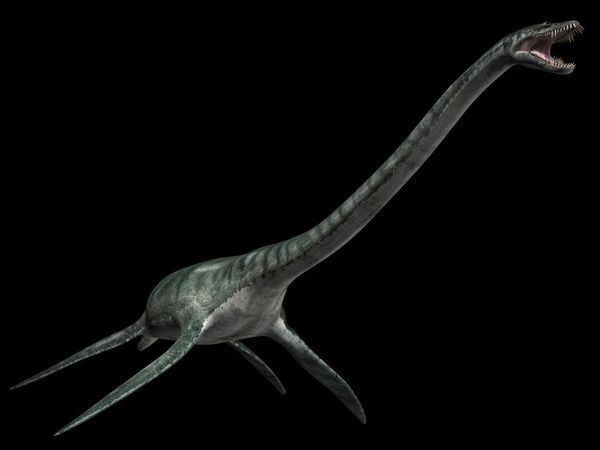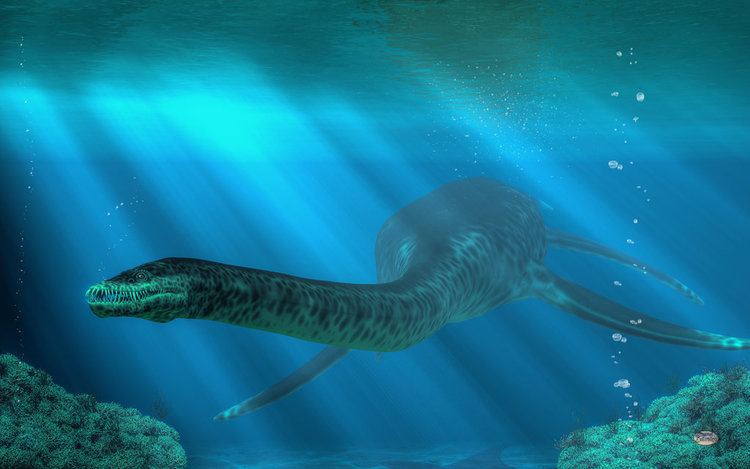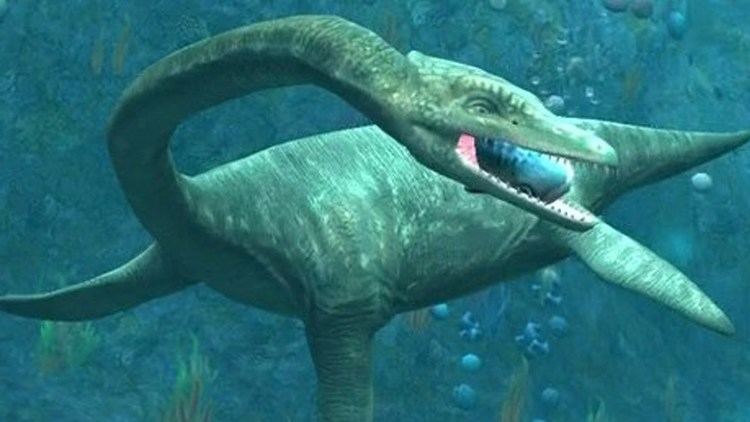Rank Genus | Class Reptilia Phylum Chordata Order Plesiosauria | |
 | ||
Family †ElasmosauridaeWelles, 1943 Similar Leptocleidus, Dolichorhynchops, Mauisaurus, Trinacromerum, Plesiosauria | ||
Styxosaurus is a genus of plesiosaur of the family Elasmosauridae. Styxosaurus lived during the Santonian and Campanian ages of the Cretaceous period.
Contents
- Styxosaurus maxed jurassic world aquatic creature
- Description
- Classification
- Discovery
- Palaeobiology
- References

Styxosaurus maxed jurassic world aquatic creature
Description

Styxosaurus was a large plesiosaur, one of several species of a group collectively called elasmosaurs that appeared in the Late Cretaceous. Elasmosaurs typically have a neck that is at least half the length of the body, and composed of 60-72 vertebrae.

Styxosaurus was around 11–12 metres (36–39 ft) long, with about half of the length being composed of its 5.25 metres (17.2 ft) neck. Its sharp teeth were conical and were adapted to puncture and hold rather than to cut; like other plesiosaurs, Styxosaurus swallowed its food whole.
Classification

Styxosaurus snowii is from a group called elasmosaurs, and is closely related to Elasmosaurus platyurus, which was found in Kansas, USA, in 1867.
The first Styxosaurus to be described was initially called Cimoliasaurus snowii by S.W. Williston in 1890. The specimen included a complete skull and more than 20 cervical vertebrae ( KUVP 1301) that were found near Hell Creek in western Kansas by Judge E.P. West.

The name was later changed to Elasmosaurus snowii by Williston in 1906 and then to Styxosaurus snowii by Welles in 1943.
A second species, Styxosaurus browni, was named by Welles in 1952. Although synonymized with Hydralmosaurus serpentinus in 1999, it has been recently revalidated.
Discovery
The holotype specimen of Styxosaurus snowii was described by S.W. Williston from a complete skull and 20 vertebrae.
Another more complete specimen - SDSMT 451 (about 11 metres (36 ft) long) was discovered near Iona, South Dakota, also in the USA,in 1945. The specimen was originally described and named Alzadasaurus pembertoni by Welles and Bump (1949) and remained so until it was synonymized with S. snowii by Carpenter. Its chest cavity contained about 250 gastroliths, or "stomach stones". Although it is mounted at the School of Mines as if its head were looking up and out of the water, such a position would be physically impossible.
Styxosaurus is named for the mythological River Styx (Στυξ), which separated the Greek underworld from the world of the living. The -saurus part comes from the Greek sauros (σαυρος), meaning "lizard" or "reptile."
The type specimen was found on Hell Creek in Logan County, Kansas and is the source of the genus name coined by Samuel Paul Welles, who described the genus, in 1943.
Palaeobiology
While most predators do not use gastroliths for grinding of food, almost all reasonably complete elasmosaur specimens include gastroliths. Although it is possible Styxosaurus may have used the stones as ballast, a Styxosaurus specimen found in the Pierre Shale of western Kansas included ground up fish bones mixed with the gastroliths. In addition, the weight of the gastroliths found in elasmosaurs specimens is always much less than 1% of the estimated weight of the living animal.
While crocodiles and some other animals may use gastroliths for ballast today, it appears likely that elasmosaurs used them as a gastric mill. See Henderson (2006) contra Wings (2004).
Styxosaurus, like most other plesiosaurs, probably fed on belemnites, fish (Gillicus, etc.) and squid. With its interlocking teeth, Styxosaurus could grab on to its slippery prey before swallowing it.
